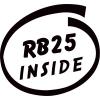New Flywheel And Clutch, Vibrations Throughout
Announcements
-
Similar Content
-
Latest Posts
-
Vertical orientation 6.2.6.1.1. The initial downward inclination of the cut off of the dipped-beam to be set in the unladen vehicle state with one person in the driver's seat shall be specified within an accuracy of 0.1 per cent by the manufacturer and indicated in a clearly legible and indelible manner on each vehicle close to either headlamp or the manufacturer's plate by the symbol shown in Annex 7. The value of this indicated downward inclination shall be defined in accordance with paragraph 6.2.6.1.2. 6.2.6.1.2. Depending on the mounting height in metres (h) of the lower edge of the apparent surface in the direction of the reference axis of the dipped beam headlamp, measured on the unladen vehicles, the vertical inclination of the cut off of the dipped- beam shall, under all the static conditions of Annex 5, remain between the following limits and the initial aiming shall have the following values: h < 0.8 Limits: between 0.5 per cent and 2.5 per cent Initial aiming: between 1.0 per cent and 1.5 per cent 0.8 < h < 1.0 Limits: between 0.5 per cent and 2.5 per cent Initial aiming: between 1.0 per cent and 1.5 per cent Or, at the discretion of the manufacturer, Limits: between 1.0 per cent and 3.0 per cent Initial aiming: between 1.5 per cent and 2.0 per cent The application for the vehicle type approval shall, in this case, contain information as to which of the two alternatives is to be used. h > 1.0 Limits: between 1.0 per cent and 3.0 per cent Initial aiming: between 1.5 per cent and 2.0 per cent The above limits and the initial aiming values are summarized in the diagram below. For category N3G (off-road) vehicles where the headlamps exceed a height of 1,200 mm, the limits for the vertical inclination of the cut-off shall be between: -1.5 per cent and -3.5 per cent. The initial aim shall be set between: -2 per cent and -2.5 per cent.
-





Recommended Posts
Create an account or sign in to comment
You need to be a member in order to leave a comment
Create an account
Sign up for a new account in our community. It's easy!
Register a new accountSign in
Already have an account? Sign in here.
Sign In Now